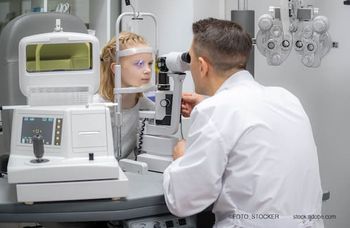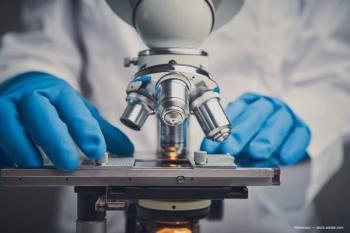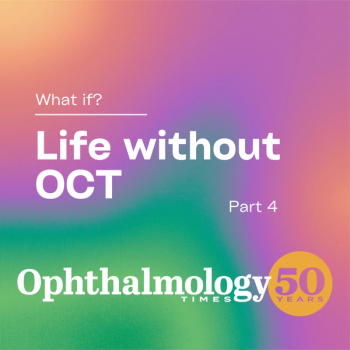
Vectored thermal pulsation delivers long-lasting MGD improvement
Follow-up from a study enrolling 200 patients with meibomian gland dysfuction showed a single treatment with vectored thermal pulsation afforded improvements in symptoms and meibomian gland function.
Reviewed by Edward J. Holland, MD
Cincinnati, OH-Vectored thermal pulsation (VTP; LipiFlow System, TearScience) is effective treatment for meibomian gland disease (MGD), and the benefit from a single procedure is sustained in the vast majority of patients for at least 1 year, according to the published results form a prospective, multicenter, open-label clinical trial [Blackie CA, et al. Clin Ophthalmol. 2016;10:1385-1396].
Related:
“We have been lacking good therapies for MGD, which is the most common cause of dry eye disease, and so VTP has been a real breakthrough. Still, there has been a lingering question about the duration of its effect,” said Edward J. Holland, MD, one of the study coauthors and director of cornea services, Cincinnati Eye Institute, Cincinnati, OH.
“This is one of the first studies including long-term follow-up after VTP treatment, and the results show that 86% of patients maintain improvement of meibomian gland function and MGD-related symptoms that lasts for at least 1 year after a single session. This is compelling information for counseling patients that VTP, which is not reimbursable, is a worthwhile procedure.”
Recent:
The study included 400 eyes of 200 patients who were initially randomized to a single, 12-minute VTP treatment or to a control group to use standardized conventional treatment for MGD with twice daily application of warm compresses for 10 minutes plus eyelid hygiene. Responses were assessed after 3 months, and no other treatments for MGD or dry eye disease were allowed during the randomized study phase.
The patients in the study had a mean age of 56 years and 71% were females. The two study groups were comparable with respect to demographics and baseline MGD features.
Outcomes were evaluated after 3 months based on assessment of a meibomian gland secretion (MGS) score and patient-reported symptoms of dry eye using the Ocular Surface Disease Index (OSDI) questionnaire. Baseline scores for MGS and OSDI were 6.2 and 45.6, respectively, in the VTP group and 6.3 and 51.8, respectively in the controls.
Related:
The patient retention rate was 96%, and analyses of both measures showed improvements in both treatment groups but with statistically significant differences favoring VTP.
In an intention-to-treat analysis, mean change (improvement) in MGS score was 11.6 in the VTP group and 4.5 in the controls (P<.0001); mean change (improvement) in OSDI score was -23.4 in the VTP group and -17.8 (P<.0068) in the controls.
Thereafter, patients in the conventional treatment group could receive VTP, and all patients were followed to 1 year. At 6 months, however, patients who did not achieve adequate symptom relief could receive a second VTP procedure or other treatment for their MGD.
Related:
After 1 year of follow-up in the original VTP group, 86.2% of patients had received only a single treatment. Their improvement from baseline MGS score averaged 6.4 (p < 0.0001), and their mean change from baseline OSDI score was -22.5 (p < 0.0001).
More:
Eighty-nine percent of control patients received only a single VTP treatment in the nine months after crossover was allowed. At the 1-year visit, they had a mean improvement from baseline of 6.3 in their MGS score and of 22.5 in their OSDI score (p < 0.0001 for both comparisons).
“These findings are consistent with my clinical experience that shows most patients treated with VTP report improvement of their symptoms that lasts more than 1 year,” Dr. Holland said. “I do recommend that patients consider an annual VTP treatment, but I have patients who want it more frequently even though their symptoms are still improved.”
VTP treatment is safe and well tolerated. In the study, there were no serious adverse events related to its use. The most common device-related event associated with VTP was eye/eyelid discomfort/pain (1.5%).
Data collected in the study were also analyzed to identify patient characteristics associated with improvement at 3 months after VTP. The results showed having less severe disease and/or shorter duration since diagnosis was associated with greater improvement in mean MGS score.
More:
Edward J. Holland, MD
Dr. Holland is on the medical advisory board for TearScience and receives speaking honoraria. He also serves as a consultant to, has conducted research for, and/or received speaking honoraria from other companies that market products used in the management of MGD.
Newsletter
Don’t miss out—get Ophthalmology Times updates on the latest clinical advancements and expert interviews, straight to your inbox.



















































.png)


